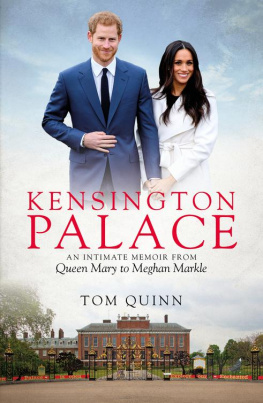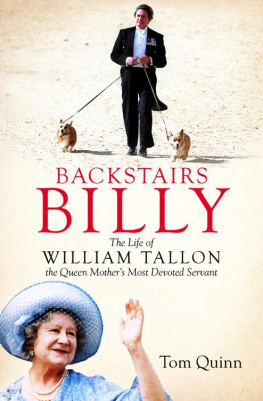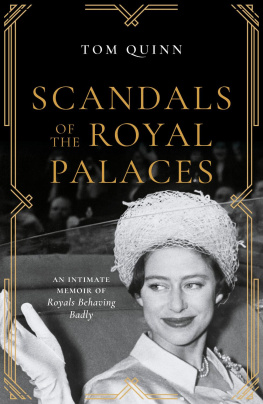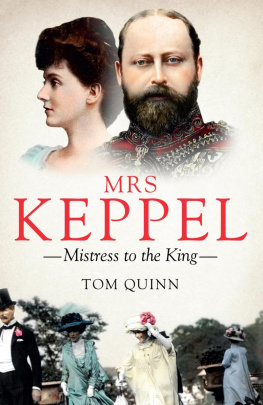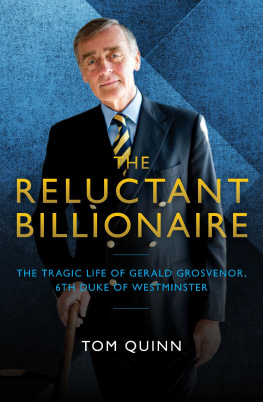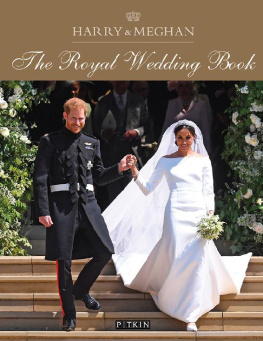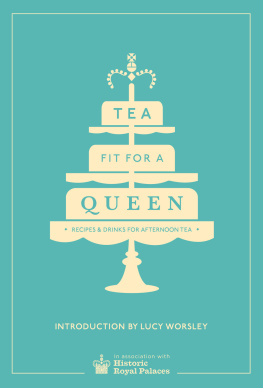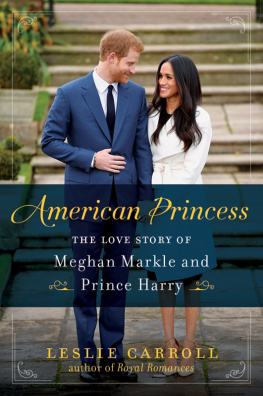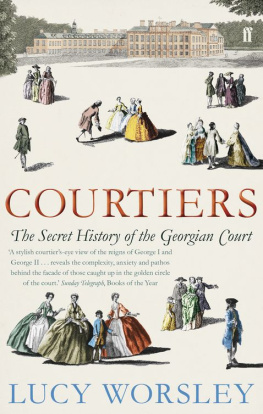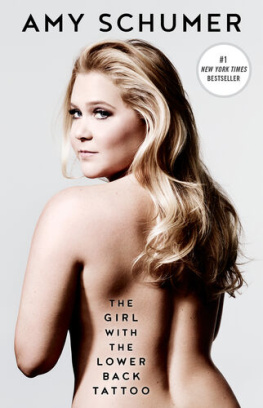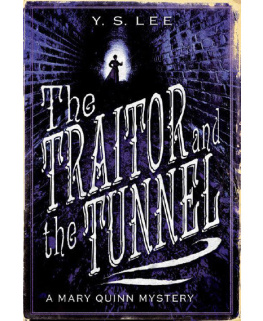Tom Quinn - Kensington Palace: An Intimate Memoir from Queen Mary to Meghan Markle
Here you can read online Tom Quinn - Kensington Palace: An Intimate Memoir from Queen Mary to Meghan Markle full text of the book (entire story) in english for free. Download pdf and epub, get meaning, cover and reviews about this ebook. year: 2020, publisher: Biteback Publishing, genre: Art. Description of the work, (preface) as well as reviews are available. Best literature library LitArk.com created for fans of good reading and offers a wide selection of genres:
Romance novel
Science fiction
Adventure
Detective
Science
History
Home and family
Prose
Art
Politics
Computer
Non-fiction
Religion
Business
Children
Humor
Choose a favorite category and find really read worthwhile books. Enjoy immersion in the world of imagination, feel the emotions of the characters or learn something new for yourself, make an fascinating discovery.
Kensington Palace: An Intimate Memoir from Queen Mary to Meghan Markle: summary, description and annotation
We offer to read an annotation, description, summary or preface (depends on what the author of the book "Kensington Palace: An Intimate Memoir from Queen Mary to Meghan Markle" wrote himself). If you haven't found the necessary information about the book — write in the comments, we will try to find it.
Kensington Palace: An Intimate Memoir from Queen Mary to Meghan Markle — read online for free the complete book (whole text) full work
Below is the text of the book, divided by pages. System saving the place of the last page read, allows you to conveniently read the book "Kensington Palace: An Intimate Memoir from Queen Mary to Meghan Markle" online for free, without having to search again every time where you left off. Put a bookmark, and you can go to the page where you finished reading at any time.
Font size:
Interval:
Bookmark:
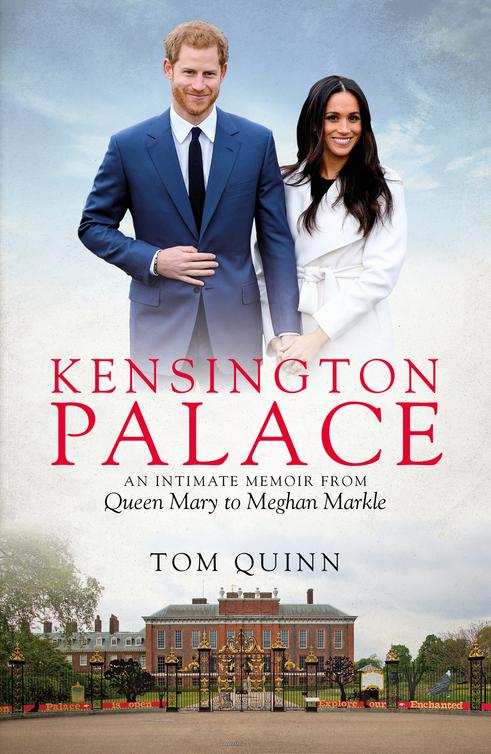


It has been said with a possible approximation to truth, that in 1802 every hereditary monarch in Europe was insane.
W alter B agehot , T he E nglish C onstitution , 1867
What is she for?
W illy H amilton MP on P rincess M argaret
K ensington Palace was the centre of court life in England from 1690 to 1760. During those years, anyone who wanted to influence the monarch or obtain favours from him (or her) for themselves or for relatives and friends had to live near or at Kensington Palace. Ministers and aristocrats, friends and relatives, those in search of work or preferment, had no choice but to travel down the Kensington road to what was then a small village west of London.
After 1760 the court left Kensington never to return, and Kensington Palace became home to the relatives and friends of succeeding monarchs. Some of its residents were part of the immediate royal family; viii others were more distantly related. Many residents were simply aristocrats who were deemed to have served the royal family in some capacity.
Rows and scheming, family disputes, petty squabbles over precedence, ancient feuds and bitterness for the royals and others, these have always been part of life at Kensington Palace.
When the court was at Kensington, the palace was the centre of political power as it was where ministers met and consulted with the monarch, but it was also the centre of the royal familys lives; today, though the court is no longer at Kensington and royal power has ebbed away, the palace remains very much central to the lives of the coming generation of royals, especially William, the future king.
This book provides a unique, intimate look at the lives of todays young royals, and also charts the lives of those who have lived at the palace throughout its history; but this is not a record of what, officially, went on. It is a history, if you like, of personal relationships. Bland official accounts often skim the surface of troubled lives and difficult relationships; they tone down tales of the mad, the bad and the dangerous to know. This book does the opposite by looking behind the scenes at the lives and loves of Kensington Palace residents and their servants down the ages, all viewed within the context of an ancient building that has only ever been partly open to the public.
In the seventeenth century, for example, when King William III and his wife Mary lived at Kensington, they got on very badly with Marys sister Anne, who hated the fact that William and Mary viewed Annes husband, Prince George of Denmark, as a complete nonentity. They lived together at Kensington Palace and were formally and superficially polite to each other, but it is easy to imagine the tears and tantrums behind the facade. More recently, in an echo of that long-vanished ix relationship, the sisters-in-law Catherine, Duchess of Cambridge and Meghan, Duchess of Sussex found themselves caught up in a similarly complex dynamic of kindness mixed with bitterness and jealousies. At Kensington there is nothing new under the sun.
Down the long years between 1760, when the monarch moved away from Kensington to Buckingham Palace, and the present era, the story of Kensington is the story of the minor royals, the more distant relatives and their countless servants who lived and died at the palace; rowing with each other, squabbling over precedence and position, but all the while keeping a beautiful and interesting building alive. x

She will have to walk behind the angels and she wont like that.
E dward VII on being asked if his mother would be happy in H eaven
You cant treat royalty like people with normal perverted desires.
T om S toppard , R osencr antz and G uildenstern A re D ead
A t various times in its history, Kensington Palace has come under real threat of demolition. The most serious threat, during the second half of the nineteenth century, was averted only when Queen Victoria insisted that her birthplace should not be destroyed. But her motivation was not entirely based on sentiment. She was shrewd enough to realise that without Kensington Palace there would be nowhere suitable in London to house all those near and distant relatives she wished either to patronise or to control (or both). It was this role as the house of the hangers-on, as one journalist put it that Edward VII famously echoed when he described Kensington Palace as the aunt heap. xii
In a sense this book is an account of the aunt heap. Here you will discover the stories of those aunts and many others who have been forgotten for too long in the effort to focus always on the immediate royal family; as the journalist Peter Mahone put it, here you will find the dotty and the potty, in a story that takes us from the early seventeenth century right up to the tempestuous years when Princess Margaret lived at the palace, and beyond, to the present day.
I have included some anecdotes that are not directly related to Kensington simply because they are funny or extraordinary or provide a neat insight into the lives of the early Hanoverians who loved the palace. Some of these stories are bizarre, at least by todays standards we forget, for example, that royal couples were public property in earlier centuries in a way that would be unthinkable now. So it was not strange at all when George II and Princess Caroline of Ansbach, on their wedding night, dressed only in their nightshirts, found themselves surrounded by courtiers, lords, ladies, servants and even strangers who watched the couple climb nervously into bed and then made extremely bawdy remarks until ushered out of the room. Or take the fact that Queen Victoria sent a telegram each month to her doctor informing him that the bowels are acting fully.
For a writer, the Hanoverians and their favourite palace are almost too good to be true and this is especially so when one considers the outliers, those most likely to find themselves tucked away at Kensington. George IIIs daughter Elizabeth, for example, was married aged forty-eight to a massively obese German widower called Frederick, Landgrave of Hesse-Homburg (known to all and sundry as Humbug). According to Karl Shaw in Oddballs and Eccentrics, Frederick was xiii forced to wash immediately before his nuptials as he stank, and as he and his bride drove away in their coach after the wedding, he threw up all over her.

Much of my information about the past fifty years of Kensington Palaces history comes from a series of interviews I conducted with servants at the palace. In the 1970s, servants were willing sometimes positively eager to talk about their lives, and this situation lasted well into the 1990s. It has been more difficult to source information in recent times, as those who work for the royal family now have to sign confidentiality agreements, but people still like to talk off the record about their lives, especially their working lives, whatever the barriers and risks. This book is the result of that desire to talk.
Font size:
Interval:
Bookmark:
Similar books «Kensington Palace: An Intimate Memoir from Queen Mary to Meghan Markle»
Look at similar books to Kensington Palace: An Intimate Memoir from Queen Mary to Meghan Markle. We have selected literature similar in name and meaning in the hope of providing readers with more options to find new, interesting, not yet read works.
Discussion, reviews of the book Kensington Palace: An Intimate Memoir from Queen Mary to Meghan Markle and just readers' own opinions. Leave your comments, write what you think about the work, its meaning or the main characters. Specify what exactly you liked and what you didn't like, and why you think so.

